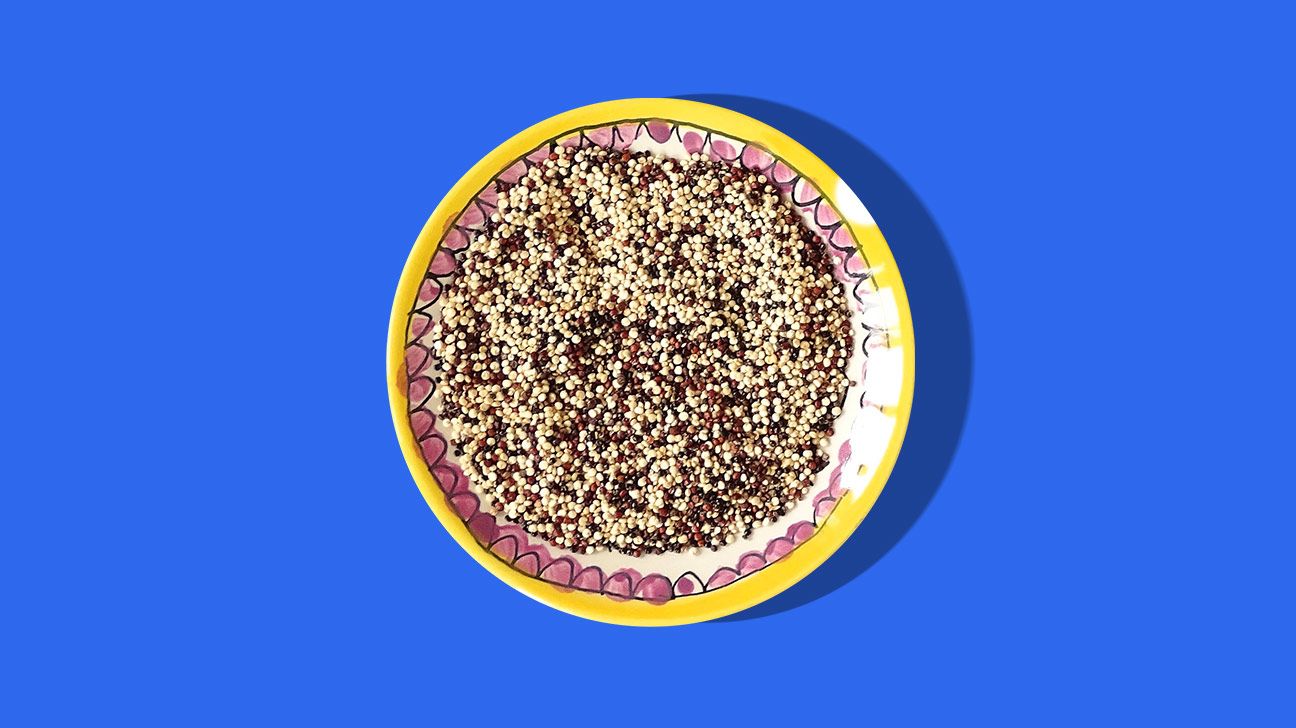Looking to connect with your roots? The Paleo diet takes you back 2.5 million years to the Paleolithic “Old Stone Age” when humans ate preservative-free, locally sourced meals… because they had to.
Following the Paleo diet today means consciously skipping grains, processed sugar, and dairy. Even quinoa, often called a superfood, doesn’t make the cut.
Is quinoa Paleo?
Quinoa isn’t Paleo-friendly because it belongs to a group of pseudocereal grains. It has lots of nutritional goodness, like protein and amino acids, but if you’re sticking to a strict Paleo diet, it’s better to go for a Paleo-friendly option like broccoli rice or zucchini noodles.

The quinoa plant has edible seeds that provide a gluten-free alternative to wheat. This popular superfood can hold its own in a breakfast bowl or be incorporated into stuffed peppers or salads.
Quinoa looks like a grain, and it walks and talks like a grain, but it isn’t technically a grain. Instead, it’s considered a pseudograin.
Like its cereal cousins, quinoa can be cooked or ground into a flour. The plus side of being a pseudograin? It means quinoa has lots of essential amino acids and protein — all good things for building strong muscles.
Nutritional value of quinoa
The stats on 1 cup of cooked quinoa:
- Calories: 222
- Protein: 8 grams
- Fiber: 5 grams
- Calcium: 31 milligrams
- Iron: 3 milligrams
The Paleo diet requires nixing processed foods, dairy, and grains (including pseudograins). This eating plan was inspired by the time period in human history when the species became smarter and more efficient.
Why eat like the world was never blessed with Twinkies? The Paleo diet is popular for a bunch of health reasons:
- Reduces inflammation. A 2016 study suggests that the Paleo diet could help decrease inflammation and oxidative stress.
- Promotes longevity. Multiple studies have suggested that people who eat more “ultra-processed foods” have a significantly higher mortality risk than those who eat fewer.
- Reduces metabolic syndrome. According to a 2015 review of studies, the Paleo diet can lead to short-term improvements in metabolic syndrome, a combo of issues that can increase your risk of other serious conditions.
If you’re sticking to a strict Paleo diet, quinoa won’t fit the bill. But quinoa is gluten-free, dairy-free, and a good source of complete protein, amino acids, and fiber. Depending on your goals, it might just be worth stretching the rules to include quinoa in your diet.
FYI: A 2020 review of studies found that the Paleo diet and the Mediterranean diet (which allows grains) had the same impact on glucose and insulin levels.
Looking to go by the book on your Paleo diet? Try one of these subs for quinoa:
- Broccoli rice. Toss some cooked broccoli into the blender for a great low carb quinoa sub. More in the mood for a white rice look-alike? Use cauliflower instead.
- Zucchini noodles. Oodles of zoodles make an awesome side that will have you calling it quits with quinoa. You can use a spiralizer to make long, curly zoodles, but a vegetable peeler or knife also works to cut them perfectly thin.
- Spaghetti squash. This popular pasta substitute can stand in for quinoa in many recipes. It’s low in calories but rich in fiber to help you feel and stay full.
Quinoa isn’t technically allowed on a Paleo diet because it’s considered a pseudograin. But that doesn’t mean it doesn’t align with the goals of many Paleo diets: It’s gluten-free, dairy-free, and full of important nutrients.
Try subbing veggie-based options like zucchini noodles and spaghetti squash to keep your menu 100 percent Paleo.

